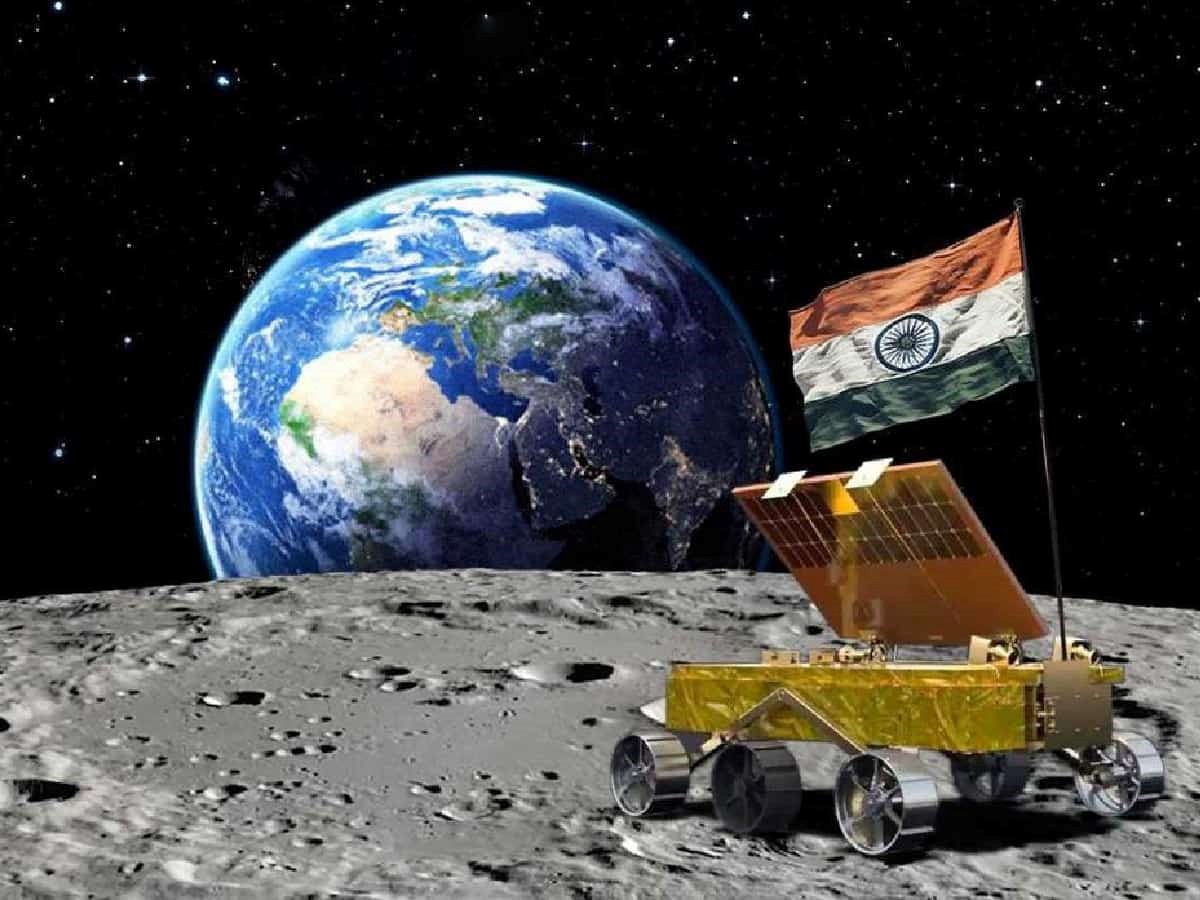The Moon for India! The First Probe to Land Close to The Lunar South Pole Is Chandrayaan-3
On August 23, the Chandrayaan-3 spacecraft successfully executed a gentle landing near the moon's south pole, marking a significant achievement for India. With this accomplishment, India becomes the fourth country to achieve a lunar landing, joining the ranks of the United States, the former Soviet Union, and China.
The momentous event took place at 8:33 am ET (1233 GMT or 6:03 p.m. India Standard Time), as confirmed by the Indian Space Research Organisation (ISRO). Following the landing, ISRO chairman Sreedhara Somanath declared, "We have achieved soft landing on the moon! India is on the moon!" This achievement underscores India's growing capabilities in space exploration.

Figure 1. The Moon for India! The First Probe to Land Close to The Lunar South Pole Is Chandrayaan-3
Figure 1. shows "This success belongs to all of humanity and it will help moon missions by other countries in the future," remarked India's Prime Minister Narendra Modi in a speech delivered after the landing. He expressed his confidence in the capabilities of countries worldwide, including those from the global south, to accomplish similar achievements. "We can all aspire to the moon and beyond," he added. Approximately two hours after the landing, ISRO shared images on X (formerly known as Twitter), showcasing the moon's surface as observed by Chandrayaan-3 during its descent. The agency also confirmed the establishment of a successful communication link between the spacecraft and mission control, further highlighting the mission's progress.
In the near future, a solar-powered rover named Pragyan (meaning "wisdom" in Sanskrit) is anticipated to disembark from Chandrayaan-3's Vikram (named "valor") lander. Operating for approximately one lunar day, equivalent to about 14 Earth days, this robotic pair is set to explore their new lunar environment. Their primary objective is to gather scientific data concerning the moon's composition before their batteries deplete following sunset. Anil Bhardwaj, the director of India's Physical Research Laboratory (PRL), which contributed several instruments to Chandrayaan-3, expressed the nation's collective excitement for the mission. He stated, "The whole country is excited about this mission. We all hope that we will be successful in ... bringing out new science from this mission," underscoring the eagerness to derive valuable scientific insights from the endeavor.
On August 17, the Vikram-Pragyan duo separated from the mission's propulsion module, which will study Earth from its lunar orbit. Following separation, the lander and rover entered an egg-shaped lunar orbit. Subsequent successful braking maneuvers were executed on August 18 and 20 to bring them closer to the moon's surface. While still in lunar orbit on August 21 and 22, the duo established communication with Chandrayaan-2's orbiter, serving as the critical link with Earth for the Chandrayaan-3 mission.
At the break of dawn, mission control at ISRO's headquarters commanded the lander to initiate its descent to the lunar surface, activating its fully automated landing system. During descent, the lander first slowed its descent to reduce its altitude from 18.6 miles (30 km) to 0.4 miles (0.8 km) above the moon's surface. The lander then oriented itself so its altimeters, equipped with onboard cameras, were facing downward in preparation for landing. At 8:33 a.m. EDT (1233 GMT and 18:03 India time), the Vikram lander achieved a historic touchdown within its designated landing area near 70 degrees south latitude. This achievement is attributed to significant changes in landing strategy following the Chandrayaan-2's 2019 crash. Algorithms calculating spacecraft speed during descent were adjusted to allow more flexibility while still ensuring a successful landing.
Key modifications contributing to the mission's success included a larger landing zone, reinforced landing legs for greater impact resistance, and dynamic engines that adjusted spacecraft velocity for a smoother landing. Improved images of the moon's surface from Chandrayaan-2's orbiter also provided a clearer understanding of the landing site.With Vikram now situated on the moon, Pragyan is poised to roll onto the lunar surface and initiate the analysis of lunar soil and rocks. Similar to the previous rover on Chandrayaan-2, Pragyan's wheels bear the Ashoka Chakra and ISRO's logo, potentially imprinting these symbols onto the lunar surface as it moves.
Vikram is equipped with a seismometer to detect moonquakes and instruments to measure lunar soil temperature. The Chandrayaan-3 mission, with a cost of approximately 6 billion rupees ($73 million US), holds significance in the context of ongoing lunar exploration efforts by various nations, including the U.S. and China. The mission's success could further inspire India's space program and foster advancements in the field.As the lunar night approaches, the lander and rover will face challenges due to extreme cold and battery drainage. Despite this, the team at ISRO is prepared to engage in post-landing activities, anticipating a busy phase ahead.
Source:SPACE.com
Cite this article:
Janani R (2023),The Moon for India! The First Probe to Land Close to The Lunar South Pole Is Chandrayaan-3,Anatechmaz, pp.569

